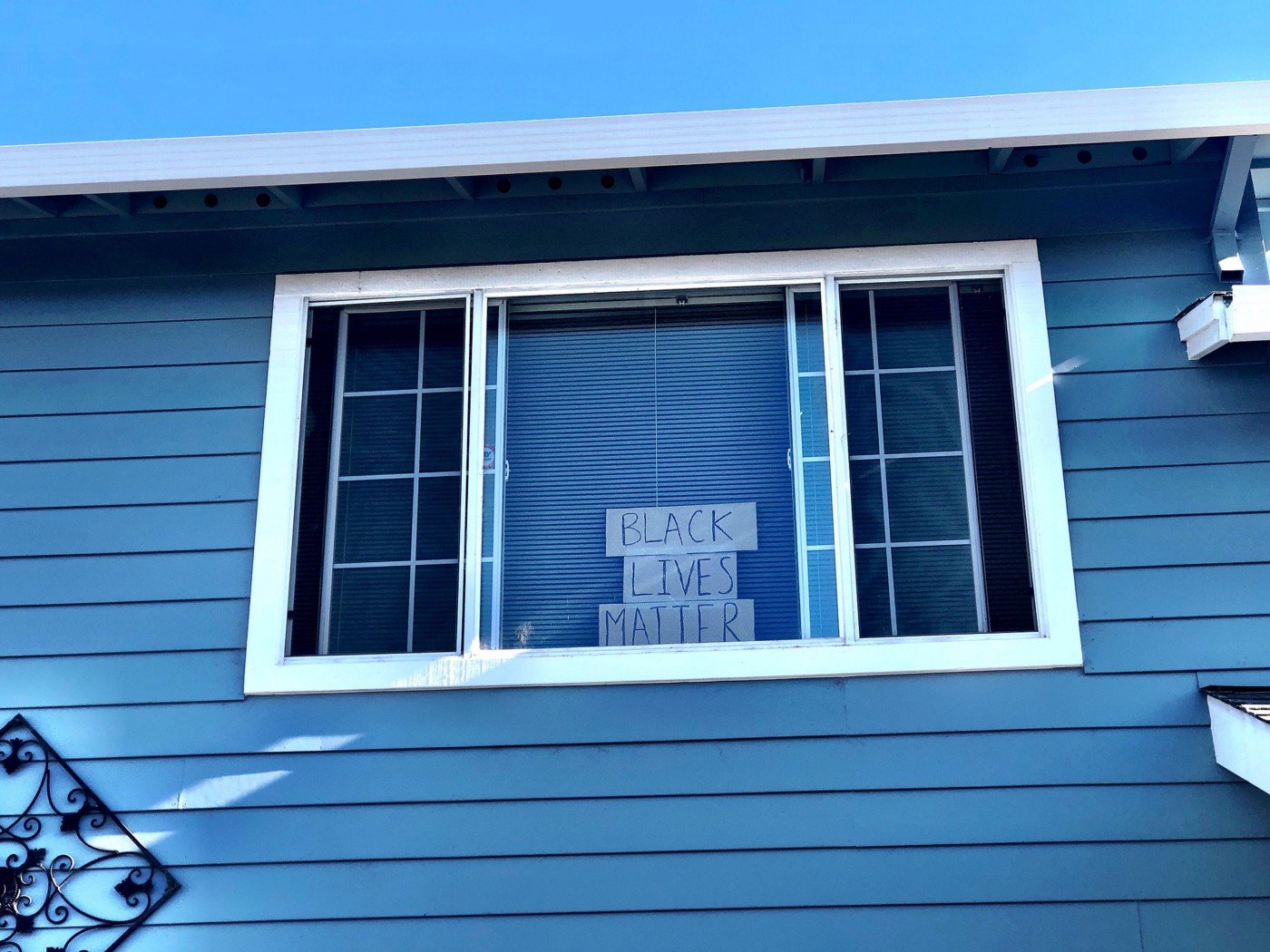Where there are more BLM signs than Black people
Image Description: photo of a house with blue siding and a window with cardboard sign in all caps “Black Lives Matter”
A few months ago, I went to Berkeley for a work event. I drove for hours between Los Angeles and Berkeley, through the Central Valley of California, an agricultural heartland, thinking about our relationship with the land, with food, and the relationship between urban and rural places.
While in Berkeley, I stayed in a cute airbnb space with big windows and minimalist decor. My colleague had booked the space. She was originally looking for a bigger house where our whole team of six could stay together, but it was difficult to find one, so we split up into two houses. I thought about the housing shortage in the Bay Area. I thought about the housing crisis as a humanitarian criss. I thought about our relationship to land, shelter, and safety.
I live in Los Angeles and in many parts of the city, it’s hard to drive for more than 10 minutes without seeing tents where houseless folks live. I often think about how Los Angeles contains so much wealth among the elite and so much pain among the people who cannot get their basic needs met. In the Bay Area, because of its smaller land mass, this contrast feels more stark, the pain more intense. Driving around in the Bay Area means witnessing the realities of houseless neighbors while knowing the unconscionable wealth of its billionaire residents.
Holding this duality, I drove past UC Berkeley’s campus, which reminded me of another duality. The Bay Area was a birthplace of so many radical political movements in the 1960’s. The Asian American Political Alliance’s anti-imperialist, anti-racist founding document was born in Berkley. The Black Panthers put out their Ten-Point Program in Oakland. Students first demanded ethnic studies on San Francisco State's campus. The East Bay was once home to a multi-racial, anti-capitalist rainbow coalition. Now it is home to some of the most exclusive and unaffordable housing stock in the country.
I was driving around in tree-lined streets with cute houses with my colleague in Berkeley when she pointed out the many Black Lives Matter signs visible on lawns and windows. “That’s so great,” she commented.
I thought for a second and said, “yea, but have we seen any Black people? What does it mean to have more BLM signs than Black people?”
When I got home, I did a little more research into the history of Berkeley. In 1970, Black residents made up about 24% of the city population. Today it is around 8%. Berkeley was the first city in the United States to pass single-family zoning, which is a zoning ordinance that only allows the building of one single-family home per lot in a neighborhood. This means that it was illegal to build apartments, condos, duplexes, or triplexes in many neighborhoods in Berkeley. A recent study from UC Berkeley found that the more single-family zoning a city has, the whiter it is. This is partly because renting or buying a single-family home is far more expensive than an apartment or condo, and systemic racism has prevented many families of color from having access to the kind of wealth that can buy a single-family home. Additionally, single-family zoning is very effective at keeping out immigrant families, who tend to have multi-generational and multi-family living arrangements.
But we don’t need a recent study to know that single-family zoning laws are racist. In the 1920’s, the Berkeley City Council passed many single-family zoning laws under the explicit language that they would provide “protection against the invasion of Negroes and Asiatics” by keeping the neighborhoods white.
Berkeley is often held up as a symbol of progressive politics. But its story is more complex. Berkeley is home to a rainbow coalition and a racist zoning law. It is a place where Black residents are displaced while white residents put up signs that say Black Lives Matter. Perhaps this is another duality to hold. But actually, when I think deeper, these are not dualities. These are singularities. To have billionaires requires the existence of houseless folks. Whiteness requires both and: both that white people feel like they are “good people” for posting the BLM sign and feel “safe” (read: exclusive) by keeping actual Black people out.

